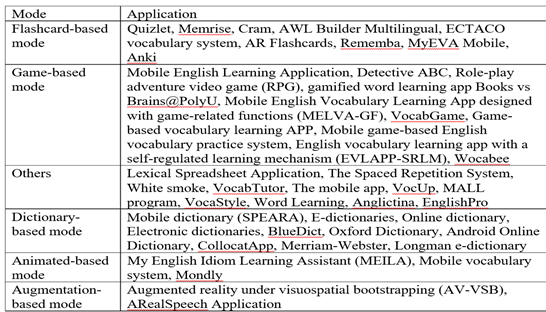CLIL and technology driven world
| Site: | Vitajte v prostredí e-learningu na Filozofickej fakulte PU |
| Course: | ELT: DASS Autonomy Development using ePortfolio |
| Book: | CLIL and technology driven world |
| Printed by: | Hosťovský používateľ |
| Date: | Tuesday, 16 December 2025, 7:35 AM |
Description
In the past fifty ye ars, the world has undergone profound changes in the
way information is both provided and acquired, as described by Goodwyn
(2014). From the earliest films of the 1960s to the latest technological
devices, the media landscape has evolved significantly. Major
advancements such as AI, the internet, Skype, and email have revolutionized
communication, while social networks have transformed online
interaction. With teachers increasingly refining their writing skills
through digital platforms like blogs, traditional reading habits have
also been influenced by visual media. This shift has led to the
emergence of new literacies, including visual literacy, as articulated
by Debes (1969). Visual literacy, encompassing the ability to interpret
visual stimuli and integrate sensory information, plays a crucial role
in learning and communication in our modern, technology-driven world. As
society becomes increasingly computer-literate, the integration of
technology into education has become imperative to meet the evolving
needs of learners.
ars, the world has undergone profound changes in the
way information is both provided and acquired, as described by Goodwyn
(2014). From the earliest films of the 1960s to the latest technological
devices, the media landscape has evolved significantly. Major
advancements such as AI, the internet, Skype, and email have revolutionized
communication, while social networks have transformed online
interaction. With teachers increasingly refining their writing skills
through digital platforms like blogs, traditional reading habits have
also been influenced by visual media. This shift has led to the
emergence of new literacies, including visual literacy, as articulated
by Debes (1969). Visual literacy, encompassing the ability to interpret
visual stimuli and integrate sensory information, plays a crucial role
in learning and communication in our modern, technology-driven world. As
society becomes increasingly computer-literate, the integration of
technology into education has become imperative to meet the evolving
needs of learners.
1. Computer Literacy
In the current era, there is a growing demand for individuals to possess a diverse set of abilities and competencies, particularly those related to computer literacy. This demand reflects the rapid development of our modern world. It is increasingly important for individuals to be able to share and design information on a global scale. Moreover, they must be proficient in analyzing, managing, evaluating, criticizing, and synthesizing information. Strong communication skills are also emphasized to enable collaborative problem-solving. Additionally, attention is drawn to the potential of technology to teach cross-cultural understanding and ethical responsibilities.2. CLIL and ICT
 According to researchers (Pavesi, Bertocchi, Hofmannova, and Kazianka, 2001), CLIL represents an innovative learning approach, and the integration of technology further raises this modern methodology. Teachers facilitating CLIL lessons not only need to select and utilize appropriate materials and resources but also possess proficiency in information technology. By utilising technology to support cognitive and linguistic skills, teachers can enhance foreign language competencies and facilitate knowledge acquisition across various content areas.
According to researchers (Pavesi, Bertocchi, Hofmannova, and Kazianka, 2001), CLIL represents an innovative learning approach, and the integration of technology further raises this modern methodology. Teachers facilitating CLIL lessons not only need to select and utilize appropriate materials and resources but also possess proficiency in information technology. By utilising technology to support cognitive and linguistic skills, teachers can enhance foreign language competencies and facilitate knowledge acquisition across various content areas.
The integration of technology into the learning process has the potential to enhance language learning by providing authentic multimedia representations of the target language, as noted by Warschauer (1997). Internet usage empowers students to construct their own knowledge and take control of their learning processes, shifting away from traditional teacher-centered instruction. This approach, known as Technology-Enhanced Language Learning (TELL), emphasizes computer-mediated communication to improve students' oral and written proficiency in their second language (L2).
The widespread integration of technology has brought about a paradigm shift in the landscape of education, fundamentally altering traditional teaching and learning dynamics. According to Pavlik (2015), technology has catalyzed transformation across four key dimensions:
- the methods of teaching and learning,
- the content taught and learned,
- the structures and costs of educational institutions, and
- the relationships between students, teachers, and educational entities (as cited in Çakir, 2016).
It is important to recognize that technology serves as a tool in the educational process; computers alone do not equal student education. Rather, technology complements educators by expediting information exchange and enhancing decision-making efficiency. Computers, for instance, can function as simulators, replicate certain aspects of teaching, and simulate specific learning environments and student behaviors (Adilbayeva1a et al., 2022). However, technology encompasses more than just computers; modern classrooms are equipped with tools such as data projectors and interactive whiteboards. These technological advancements have made lessons more engaging by stimulating multiple senses and promoting student activity, thus facilitating deeper understanding of subject matter (Horňáková, Horváthová, & Sušinková, 2012). To put it simply, technology has made it possible for students to participate more actively and with greater interest in the classroom setting.
3. Digital Tools and CLIL Lesson
To enhance comprehension of content, it is widely believed that pre-teaching key vocabulary is essential. Several studies, including those by Zhang (2012) and Sprenger (2013) emphasize the importance of vocabulary teaching techniques. Zhang, for example, highlights the significance of cultural awareness in vocabulary learning, suggesting that understanding how native speakers think when using expressions aids comprehension and proper usage. Additionally, learners can relate new words to prior information by calling on their experiences, prior knowledge, and picture schemas.
According to Gärdenfors (2009), interpreting word meanings involves cognitive semantics and image schemas. Understanding these schemas, such as the image schema for "a dog," which includes sensory aspects like smell and appearance, aids in comprehending word meanings. These schemas are acquired through experience and relationships with other schemas, driving conceptual meanings.
To support vocabulary development and foster independent learning, eVoc strategies offer visual and digital tools. Dalton and Grisham (2011) introduce strategies like Wordle and WordShift, which allow students to visualize words and their meanings, create word clouds, and engage in activities pre- and post-reading to reinforce vocabulary learning. These creative tools not only enhance vocabulary acquisition but also promote student engagement and participation in the learning process.
3.1. Vocabulary and Grammar

It is no surprise that vocabulary learning has the highest number of
available applications, given its crucial role in foreign language
acquisition. Various types of exercises, including descriptive,
video-based, multiple-choice, fill-in-the-blank, sorting, matching,
crossword, and translation exercises, offer diverse ways to practice and
learn new words.
Free
software like HotPotatoes and platforms like EduPage enable teachers to
create customized exercises, while commercial applications provide
additional options for both educators and students.
Vocabulary Learning-Designed Applications in the CLIL Context

Source: Alhuwaydi, 2022, Lei, et al., 2022
Quizlet is a versatile flashcard tool designed for memorizing vocabulary or any other content teachers wish to reinforce. Teachers can create sets of terms and definitions, accessible to students for studying in multiple modes.
WocaBee offers class management features, allowing teachers to add word packages, practice vocabulary, assign homework, and even teach pronunciation using pictures, catering to younger learners.
Vocup serves as a vocabulary trainer, enabling users to compile digital vocabulary books, share them with others, and track their progress, including monitoring mistakes.
Merriam-Webster and Longman e-dictionaries provide comprehensive definitions, including collocations and idioms, along with correct pronunciation and engaging word games, benefiting language learners. While not specifically designed for language acquisition, they remain valuable resources.
Mondly, similar to DuoLingo, is ideal for individual learners, offering comprehensive practice in reading, writing, speaking, and listening skills across various topics such as business, family, travel, restaurants, and emergencies.
3.2. Reading
 Mobile devices offer convenient access to webpages, granting students
the ability to explore a vast array of authentic texts across a
multitude of subjects. They can search for answers or gather information
on assigned topics from various websites.
Mobile devices offer convenient access to webpages, granting students
the ability to explore a vast array of authentic texts across a
multitude of subjects. They can search for answers or gather information
on assigned topics from various websites.
Some platforms cater specifically to language learners, providing valuable resources for grammar, pronunciation, and current phrases.
- the BBC Learning English app offers not only grammar and pronunciation support but also texts on contemporary issues
- the Learn English Teens website by the British Council features texts with comprehension and vocabulary questions tailored to learners at different proficiency levels. It also offers tasks for understanding video content, self-testing, and grammar and vocabulary exercises.
- for an American perspective, the Voice of America Learning English website provides texts on current affairs accompanied by audio recordings for further engagement and comprehension.
3.3. Listening
Just as reading materials are accessible online, the internet and mobile
devices offer authentic listening opportunities as well. 
Podcasts, audiobooks, and songs are commonly used for language learning purposes.
Podcasts, which are audio or video blogs broadcasted over the internet,
offer a plethora of content by native speakers on various topics such as
news, sports, or radio programming.
Audiobooks, in the form of MP3 audio files, provide learners with rich auditory contexts and can be accessed alongside text files for clarity.
Songs, available through apps like Spotify, expose learners to authentic language and pronunciation while also offering opportunities for vocabulary enrichment. Some apps even offer quizzes to evaluate comprehension and listening skills.
Overall, mobile devices have significantly , making language learning more engaging and effective,
particularly when incorporated into CLIL contexts.
3.4. Writing
Writing, often seen as a frighting task by students, can become more enjoyable and engaging with the CLIL. Through features like collaboration and sharing, CLIL offers various forms to enhance the writing experience.
- blogging, where students can regularly express their thoughts and receive feedback from both peers and teachers, fostering a more effective learning environment;
- mobl
 ogging, a form of
mobile blogging, allows students to publish content directly from their
handheld devices, promoting language creation and collaborative
exercises;
ogging, a form of
mobile blogging, allows students to publish content directly from their
handheld devices, promoting language creation and collaborative
exercises; - Wikis serve as collaborative platforms for students to create and edit materials together, facilitating processes like brainstorming, drafting, and publishing written work;
- cloud-based platforms like Google Docs enable real-time collaboration on documents, enabling students to work together seamlessly;
- Twitter - a social network can also encourage writing by allowing students to interact with real-world personalities and engage in discussions related to classroom topics through hashtags.
3.5. Speaking
Incorporating audio-visual tools into language learning not only makes classes more dynamic but also enhances engagement and fosters a deeper understanding of language concepts compared to traditional teaching methods.
Oral activit ies in language learning can take place synchronously, in
real-time, or asynchronously, through recorded interactions. With the
rise of online teaching, conferencing apps like Zoom, Google Meet, and Microsoft Teams have become essential tools for facilitating live
interactions between students and teachers, as well as connecting with
native speakers or experts. These platforms allow for various tasks such
as comprehension exercises, dialogues, and simulations of practical
activities, fostering engagement and communication skills among
students. Moreover, the familiarity of students with mobile
communication makes it seamless to integrate such tools into the
learning environment.
ies in language learning can take place synchronously, in
real-time, or asynchronously, through recorded interactions. With the
rise of online teaching, conferencing apps like Zoom, Google Meet, and Microsoft Teams have become essential tools for facilitating live
interactions between students and teachers, as well as connecting with
native speakers or experts. These platforms allow for various tasks such
as comprehension exercises, dialogues, and simulations of practical
activities, fostering engagement and communication skills among
students. Moreover, the familiarity of students with mobile
communication makes it seamless to integrate such tools into the
learning environment.
Recorded activities also offer valuable opportunities for language
practice. Apps like HelloTalk provide features for text and voice
recording, translation, and pronunciation practice. Additionally, social
networking apps like Beetalk can enhance learning by allowing students
to share recorded conversations from textbooks and receive feedback from
peers and instructors. Gaming apps, such as
Story Wheel, offer a fun
way to develop storytelling skills, with players taking turns to create
recorded voice-overs aligned with animated images. Paid applications
like offer collaborative features, enabling students to
interact with each other's work through comments, ratings, and
questions, enriching the learning experience.
3.6. Applications and Platforms
In addition to the previously mentioned tools, there are various other apps and platforms that teachers can utilize to enhance language teaching through mobile devices. These tools often bridge different language skills and cater to both students and educators.
Virtual Learning Environments (VLEs) like Moodle, Blackboard, and Edmodo provide comprehensive support for course delivery, including managing learning materials, tracking progress, and facilitating collaboration among students.
In the CLIL classroom, teachers can utilise a range of mobile tools and apps to create interactive and engaging language learning experiences:
- Kahoot: An interactive quiz platform for creating fun and engaging quiz-based games, ideal for reviewing vocabulary, grammar, and language concepts.
- eClicker: A classroom response system that enables teachers to create polls, quizzes, and surveys, promoting real-time feedback and class participation.
- Socrative: A student response system for creating quizzes, assessments, and exit tickets, facilitating formative assessment and personalized instruction.
- Padlet: A collaborative tool for creating digital bulletin boards, useful for interactive activities like brainstorming, sharing resources, and collaborating on language projects.
- Seesaw: A digital portfolio platform where students can showcase their language-related work and progress, receiving feedback from teachers and peers.
- Flipgrid: A video discussion platform for oral communication practice, where students respond to prompts with short video recordings, fostering peer interaction in the target language.
- Nearpod: An interactive presentation and assessment tool for creating multimedia lessons with quizzes and polls, facilitating real-time participation and feedback on language skills.
These tools promote interactivity, engagement, and student-centered learning in language classrooms,